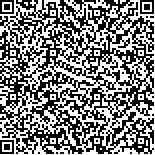下载中心
优秀审稿专家
优秀论文
相关链接
摘要

提出"全域-局部"遥感信息分布提取模型,通过计算和整合影像局部范围内的空间和光谱特征来优化全域上光谱混淆较大像元的提取精度。模型分为两个主要计算步骤:"全域"前分类与"局部"后分类;"全域"前分类将仅划分出满足一定精度阈值标准的像元,而"局部"后分类则在此部分分类结果基础上,进一步发掘和计算已分类像元所蕴含的信息来辅助对全域未分类像元的提取。在不透水面专题提取过程中,采用支持向量机SVM作为前分类器,通过控制精度阈值所对应的分类后验概率产生部分分类结果;采用调节最小距离分类器作为后分类器,根据一定的权重整合像元局部范围内的空间与光谱信息,代替了传统的全域光谱信息来优化分类。实验采用TM5影像以及所对应的NLCD(National Land Cover Data)标准不透水面产品作为测试集,"全域-局部"模型对应单一SVM模型的提取精度由80.31%提高为82.73%,局部后分类器精度较单一SVM模型由54.27%提高到59.94%。实验证明该模型具有较明显的精度提升且能够较好地解决不透水面与裸土混淆的问题,并得到空间形态上更为完善的不透水面提取结果。
This paper presents a "global-local" remote sensing information extract model, which extracts and integrates the spatial and spectral characteristics within the images local area. The model can optimize the accuracy of extraction on the pixels with spectral fuzzy. The model can be briefly described into two steps: "global" prior classifier and "local" posteriori classifier. The "global" priori classifier will only classify pixels which are above certain accuracy thresholds, and the "local" posteriori classifier will further explore the information of the already classified pixels from the partial-classified results. The local information will be used to classify the unclassified pixels at the global scale. When extraction of Impervious Surface Area (ISA) experiment, we used Support Vector Machine (SVM) as a priori classifier, which is controlled by an accuracy threshold to output the partial-classified results. We also used an Adjust Minimize Distance Classifier (AMDC) as the posteriori classifier, which integrates the spatial information within local area around the unclassified pixels to classify the pixels with high degree of difficulty of classification by only spectral information. The experiment on the Landsat TM5 image and corresponding National Land Cover Database (NLCD) pro-ducts as reference indicates that "global-local" model enhanced the accuracy from 80.31%, which is provided by SVM model, to 82.73%. Meanwhile, the accuracy of posteriori classifier was enhanced from 54.27% (SVM) to 59.94%. The results proved that combine with spatial and spectral information is an effective way for ISA extraction and the "globle-local" model can improve the accuracy of ISA extraction and can obtain more spatially explicit results.

